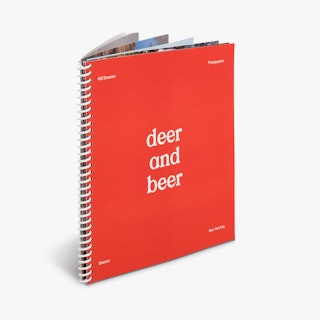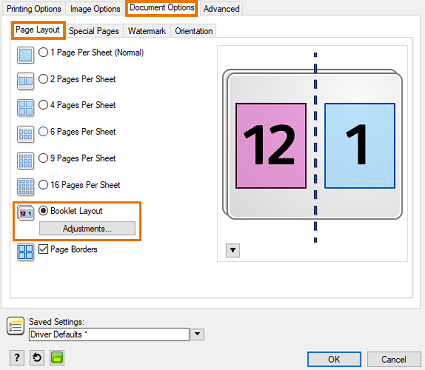10 Innovative Ways Booklet Printing Is Revolutionizing Promotional Campaigns
10 Innovative Ways Booklet Printing Is Revolutionizing Promotional Campaigns
Blog Article
The Crucial Guide to Comprehending Booklet Printing Options and Techniques
The process of brochure printing includes multiple considerations that can considerably affect the final product. From choosing the suitable style and size to comprehending the subtleties of binding techniques, each selection plays an important function. Additionally, aspects such as paper supply and printing techniques more affect the performance of the pamphlet. As one navigates these options, it becomes important to comprehend exactly how they adjoin and what that indicates for the general result.
Recognizing Pamphlet Sizes and layouts
When considering pamphlet printing, understanding the numerous layouts and dimensions offered is important for attaining the preferred presentation. Pamphlets can be created in various formats, including saddle-stitched, spiral-bound, and perfect-bound, each offering unique benefits. Usual dimensions range from conventional letter (8.5 x 11 inches) to smaller choices like A5 (5.8 x 8.3 inches), permitting versatility based on material and target audience.Selecting the appropriate dimension can affect both the design and visitor interaction. Larger sizes might suit visually driven material, while smaller formats might be much more portable and easy to use. Furthermore, the variety of pages impacts the option of binding method, as thicker brochures may call for tougher bindings. Inevitably, understanding these aspects enables for a much more tailored method, making certain that the final product aligns with the desired message and visual, improving the general efficiency of the interaction.
Selecting the Right Paper Stock

Binding Approaches: Factors To Consider and options
When it comes to binding methods for brochures, several alternatives are readily available, each with distinct benefits. Saddle stitch binding offers an economical remedy for thinner brochures, while ideal binding techniques supply an even more polished try to find thicker magazines. Wire-O binding stands apart for its longevity and ease of usage, making it suitable for records that call for versatility.
Saddle Stitch Binding
Saddle stitch binding offers a affordable and practical option for constructing booklets, making it a popular option among services and authors. This binding method entails folding sheets of paper in fifty percent and stapling them along the fold line, creating a orderly and cool look. Generally appropriate for brochures with a lower web page count, saddle sewing is suitable for magazines, brochures, and educational materials. The simpleness of this method enables fast manufacturing and is commonly favored for brief runs or marketing things. However, it is necessary to note that saddle stitch binding might not be appropriate for thicker brochures, as the spinal column may not stand up under enhanced weight. Generally, it remains a trusted choice for lots of printing projects.
Perfect Binding Techniques
Perfect binding is a widely utilized technique that gives a refined and specialist surface to publications and booklets. This method includes gluing the pages together at the back making use of a solid adhesive, permitting a tidy side and the capability to hold a bigger number of pages contrasted to saddle stitching. Perfect binding is specifically suitable for thicker booklets, such as catalogs and annual reports, where a tough, flat back is preferred. In addition, it offers the choice for a printed cover that can be made to improve visual allure. Considerations such as page matter, paper weight, and the meant usage of the pamphlet must be taken right into account, as they can affect durability and total top quality.
Wire-O Binding Alternatives
Wire-O binding, understood for its sturdiness and adaptability, offers a superb option for booklets that require simple web page turning and an expert appearance. This binding method uses a collection of steel loops that hold web pages safely, allowing them to lie level when open. It is especially suitable for handbooks, directories, and discussions due to its robust nature. Wire-O binding is readily available in different shades and diameters, fitting different page counts and thicknesses. Additionally, it allows the addition of tabs and covers, boosting the booklet's total aesthetic. Factors to consider for Wire-O binding include the option of cord color, the dimension of the loopholes, and the extent of personalization preferred, every one of which can exceptionally influence the last product's look and performance.
Digital vs. Offset Printing: Which Is Best for You?
When choosing a printing approach for booklets, comprehending the differences between electronic and counter printing is crucial. Digital printing utilizes contemporary technology to generate top notch prints swiftly and economically, making it optimal for brief runs or tasks needing fast turnaround times. It allows for modification, supplying the capacity to publish on-demand with marginal waste.In comparison, offset printing is a traditional approach that masters creating large quantities with constant top quality. It entails moving ink from a plate to a rubber covering, then to the paper, which leads to lively colors and precise details. Counter printing generally requires longer configuration times and is much more cost-effective for larger volumes.Ultimately, the choice between electronic and counter printing depends on project needs, spending plan, and desired amount. For little, time-sensitive projects, electronic may be the most effective selection, while balanced out might be more suitable for bigger, high-grade productions.

Creating Your Pamphlet: Tips and Ideal Practices
When making a brochure, cautious attention to design, font option, and color use can significantly enhance its performance. A well-structured format overviews the visitor's eye, while appropriate font styles guarantee readability and communicate the desired tone. Furthermore, reliable usage of shade can evoke emotions and highlight essential info, making the total layout a lot more impactful.
Picking the Right Format
How can one properly pick the right layout for a booklet? Initially, it is vital to review the booklet's purpose and target market. A tidy, organized design improves readability and engagement. Using a grid system can aid in aligning components regularly, creating an expert appearance. Additionally, integrating aesthetic power structure with varying sizes and positionings of photos and text can direct the reader's eye and stress vital info. It is additionally crucial to leave adequate white room, which avoids overcrowding and enables much better emphasis. Ultimately, examining different layouts with mock-ups can offer insight into just how the design performs in real-world circumstances, making certain that the final product satisfies both useful and visual requirements.
Picking Proper Fonts
A well-chosen font style can substantially boost the overall layout of a booklet, matching the design and strengthening the material's message. The choice of font styles need to take into consideration readability, specifically for body text, as it ensures the information is accessible to all viewers. Sans-serif font styles are often preferred for electronic layouts, while serif font styles can lend a conventional feel in printed materials. It's suggested to restrict font choices to two or 3 to keep aesthetic comprehensibility. Furthermore, font dimension plays an important role; headings need to be not frustrating but distinct, while body message should useful link fit for analysis. When selecting fonts, placement with the pamphlet's theme and target market is vital for effective communication and aesthetic charm.
Efficient Use Color
Shade functions as an effective tool in brochure style, directing and forming assumptions visitor emotions. It can stimulate sensations of enjoyment, trust, or calmness, relying on the tones picked. Designers need to take into consideration shade concept concepts, making sure that the selected palette straightens with the brochure's message and target audience. As an example, utilizing cozy colors like red and orange can develop seriousness, while cooler tones like environment-friendly and blue foster tranquility.Additionally, contrast plays an essential duty; complementary colors can enhance readability and aesthetic allure. Consistency in color usage across web pages even more reinforces brand identity and cohesion. Eventually, reliable color execution not just captures attention yet also reinforces the brochure's function, making it a crucial aspect of see this website effective style.
Finishing Touches: Coatings and Unique Results
While many think about the web content and layout of a booklet one of the most important elements, the completing touches, such as coverings and unique impacts, play a crucial role in enhancing its overall allure. Coatings can give defense and longevity, making certain that the brochure endures deterioration. Matte finishes provide a sophisticated, non-reflective surface area, while shiny layers can make colors appear even more vivid and captivating. Special effects, like embossing or aluminum foil marking, include a responsive measurement that can create an unforgettable perception. These strategies can highlight particular locations, attracting focus to essential details or producing aesthetic rate of interest. Furthermore, UV finishing can provide a high-shine surface that elevates the overall look.Together, these completing touches not just boost the brochure's visual yet additionally connect professionalism and reliability and focus to information, inevitably leaving a long lasting effect on the visitor.
Expense Factors To Consider for Pamphlet Printing
Recognizing the numerous expense considerations for pamphlet printing is crucial for businesses and companies aiming to optimize their spending plans. Key aspects affecting costs include the selection of ink, binding, and paper techniques. Greater quality materials, such as superior paper or specialized inks, typically increase the general cost. In addition, the size and page count of the brochure play a substantial role; larger brochures call for even more sources and time to produce.Another important consideration is the printing strategy, whether electronic or offset, as each has its own pricing structure and suitability for different quantities. Services need to also factor in layout costs, which can vary based on complexity and the use of expert solutions. Eventually, delivery and handling costs can add to the total, especially for large orders. By assessing these aspects, companies can make educated decisions that align with their monetary abilities while accomplishing the desired high quality in their printed materials.
Frequently Asked Questions
What Are the Ecological Influences of Pamphlet Printing?
The ecological influences of brochure printing include deforestation from paper manufacturing, carbon exhausts from transport, and waste generation from thrown out products - Booklet Printing. Sustainable practices, such as making use of recycled paper and eco-friendly inks, can minimize these effects
Exactly How Can I Guarantee Color Precision in My Pamphlet?
To ensure color precision in a pamphlet, one must use calibrated displays, utilize professional shade profiles, carry out test prints, and pick top notch printing services that offer shade matching and proofing choices for best outcomes.
What Is the Common Turnaround Time for Booklet Printing?
The common turnaround time for booklet printing differs depending upon the complexity and amount - Booklet Printing. Typically, it varies from a few days to two weeks, affected by factors such as publishing methods and ending up demands
Exist Minimum Order Quantities for Brochure Printing?

Can I Print Brochures in Numerous Languages?
Publishing booklets in several languages is feasible. Several printing solutions offer options for multilingual or multilingual formats, allowing for efficient communication. Cautious planning assurances that create elements suit numerous languages without compromising readability or aesthetic appeals. In addition, variables such as paper supply and printing strategies more influence the effectiveness of the booklet. When thinking about booklet printing, understanding the various formats and sizes available is important for achieving the desired presentation. When selecting a printing method for pamphlets, recognizing the distinctions in between digital and balance out printing is necessary. Furthermore, the size and web page matter of the pamphlet play a substantial function; larger booklets require even more sources and time to produce.Another crucial consideration is the printing technique, whether electronic or countered, as each has its very own prices structure and viability for various quantities. The ecological influences of brochure printing include logging from paper manufacturing, carbon discharges from transport, and waste generation from thrown out materials.
Report this page